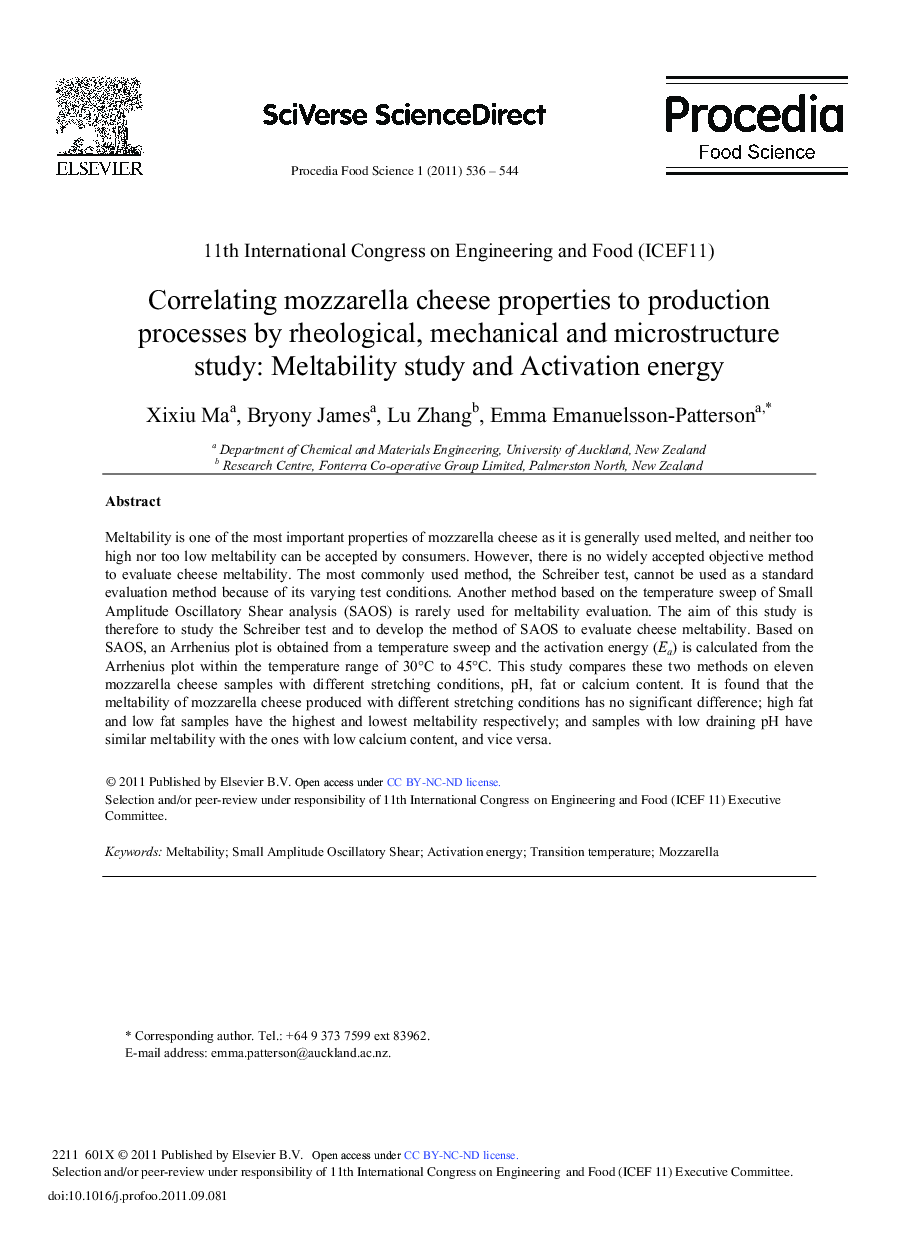| کد مقاله | کد نشریه | سال انتشار | مقاله انگلیسی | نسخه تمام متن |
|---|---|---|---|---|
| 1264989 | 1496855 | 2011 | 9 صفحه PDF | دانلود رایگان |

Meltability is one of the most important properties of mozzarella cheese as it is generally used melted, and neither too high nor too low meltability can be accepted by consumers. However, there is no widely accepted objective method to evaluate cheese meltability. The most commonly used method, the Schreiber test, cannot be used as a standard evaluation method because of its varying test conditions. Another method based on the temperature sweep of Small Amplitude Oscillatory Shear analysis (SAOS) is rarely used for meltability evaluation. The aim of this study is therefore to study the Schreiber test and to develop the method of SAOS to evaluate cheese meltability. Based on SAOS, an Arrhenius plot is obtained from a temperature sweep and the activation energy (Ea) is calculated from the Arrhenius plot within the temperature range of 30 °C to 45 °C. This study compares these two methods on eleven mozzarella cheese samples with different stretching conditions, pH, fat or calcium content. It is found that the meltability of mozzarella cheese produced with different stretching conditions has no significant difference; high fat and low fat samples have the highest and lowest meltability respectively; and samples with low draining pH have similar meltability with the ones with low calcium content, and vice versa.
Journal: Procedia Food Science - Volume 1, 2011, Pages 536-544